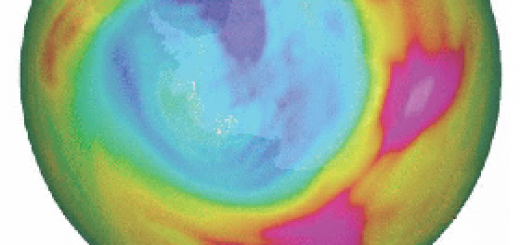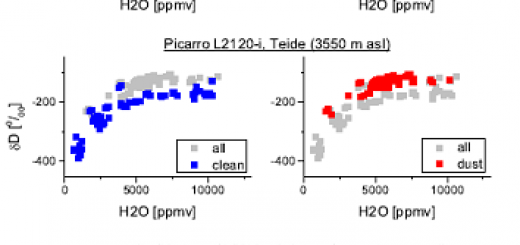Study of the transatlantic transport of dust: Africa–Canary Islands–Caribbean–USA
Dust from the Sahara (or “Calima” as commonly named) has a clear seasonality, affecting the Canary Islands in the upper layers especially in summer. It is estimated that arid regions of North Africa emit ~70% of the total dust emissions, with global implications in many aspects of climate, marine biogeochemical processes, soil fertility, air quality and human health. The Saharan Air Layer (SAL), which extends from the northwest of the African continent, can travel thousands of kilometers across the Atlantic Ocean reaching the Caribbean, Florida and the Gulf of Mexico. These dust air streams are visible from satellite, as shown in the image captured by NASA’s Aqua satellite on July 19 (Figure 1). One of these long-range transport episodes took place in the first half of July, when huge amounts of Saharan dust were exported and transported across the Atlantic Ocean, reaching the Yucatan Peninsula (Mexico) and Texas after crossing almost 8.000 km. (http://modis.gsfc.nasa.gov/gallery/individual.php?db_date=2016-07-31).
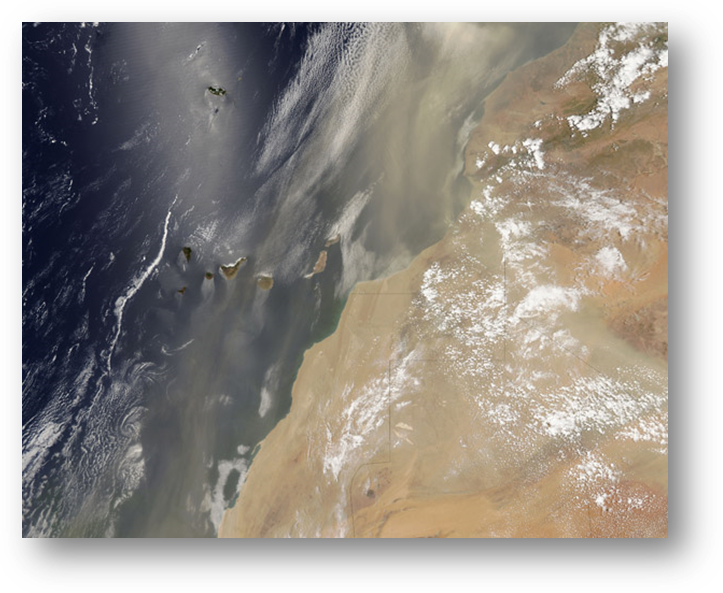
Figure 1. Image captured on 19th July 2016 by the Moderate Resolution Imaging Spectroradiometer (MODIS) aboard NASA’s Aqua satellite. The image (true-color) shows a broad band of Saharan dust blowing off of Morocco and Western Sahara and shrouding the Canary Islands and Atlantic Ocean.
The Izaña Atmospheric Research Center (IARC) carries out intensive measurement campaigns* each summer (Figure 2), in order to characterize the physical and chemical properties of Saharan dust. During July and August, aerosol samples of different sizes are collected daily: total particulate matter (PMT), particles with diameter less than 10 microns (PM10), less than 2.5 microns (PM2.5) and less than 1 micron (PM1), to determine its concentration (Figure 1A) and chemical composition.
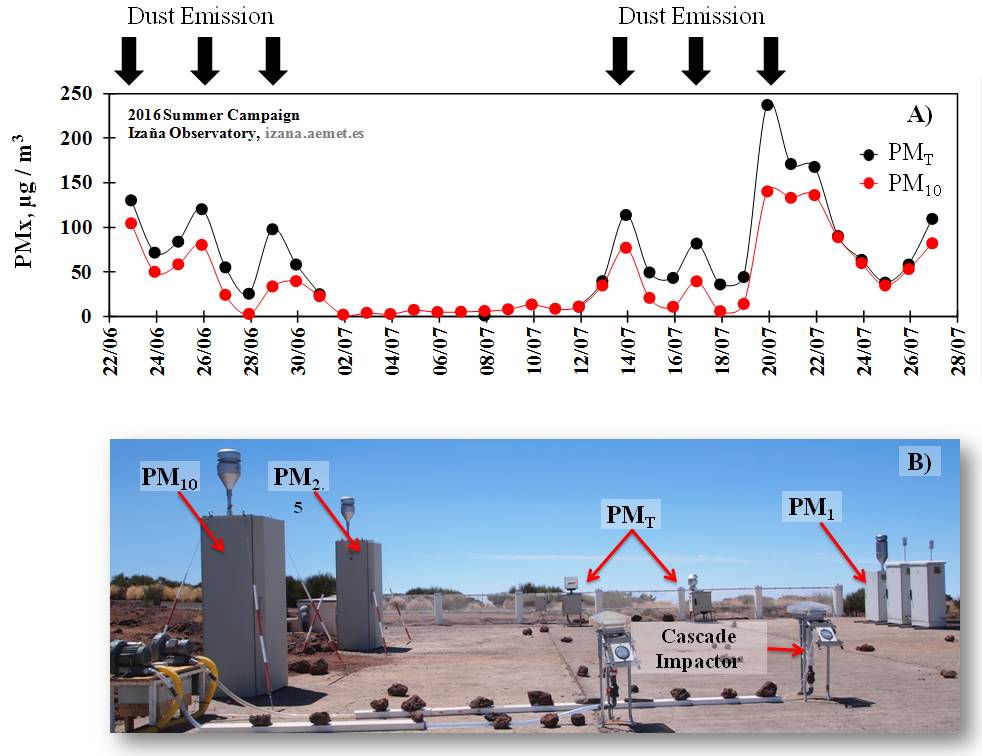
Figure 2. (A) Concentration of total particulate matter (PMT) and less than 10 microns (PM10) collected during the first month of the 2016 campaign. Dust export event can be clearly seen. (B) Instrumentation for sample collection at the Izaña Atmospheric Research Center. Samplers used for collecting PMT, PM10, PM2.5 and PM1 and the cascade impactor (to sampler different aerosol diameters at the same time).
The IARC maintains collaborations with the Universities of Lille, Puerto Rico and Miami, which has allowed the simultaneous collection of samples in Senegal, Barbados, Puerto Rico and Miami (Figure 3) for monitoring the transatlantic transport of dust this summer.
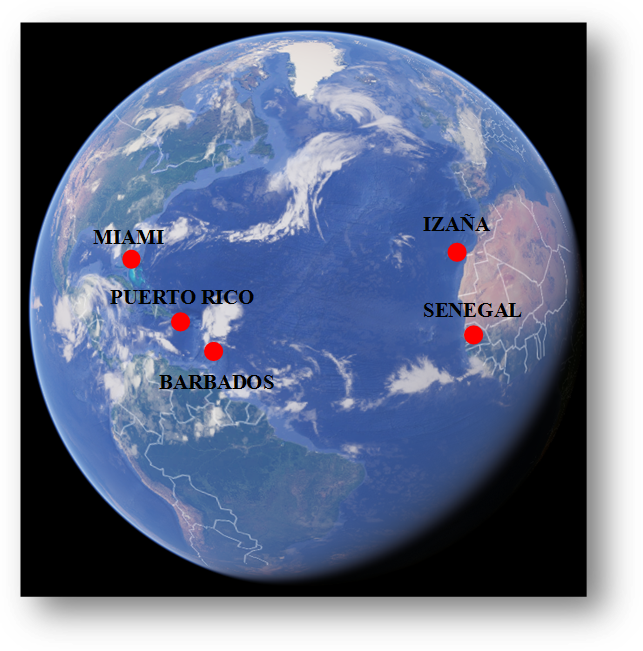
Figure 3. Sampling stations, which collaborate with the IARC, where daily samples are collected during the summer of 2016 to monitor the transatlantic transport of Saharan dust.
In events of particular importance, such as the huge dust export captured by MODIS on 19th July, samples are also collected with the cascade impactor (which allows obtaining other particle diameters than those sampled every day). Dust forecast models (such as Skiron, Barcelona Dust Forecast and GEOS), allowed us tracking the transatlantic transport of the Saharan air mass and to coordinate the sampling in Barbados (where the dust plume arrived on July 25) and Miami (where the dust plume arrived on July 28). The dust transport from 19 to 28 of July can be followed through the next video where the dust aerosol optical thickness, provided by the Goddard Earth Observing System Model Version 5 (NASA/GMAO GEOS-5), is shown.
{flv width=”800″ height=”450″ flashver=”0.0.0″ alt=”Error”}DustAOT{/flv}
Results of these measurements will permit to (i) identify the meteorological scenarios that leads the dust export and transport across the Atlantic ocean, (ii) develop a methodology to identify the transport of certain dust masses through the sampling sites and (iii) evaluate changes in dust properties during the transatlantic transport.
* The aerosol summer campaign of the Izaña Atmospheric Research Center is performed in the frame of the project AEROATLAN (CGL2015-66299-P), financed by the Ministry of Economy and Competitiveness of the Government of Spain through the European Regional Development Fund (FEDER).
Link to Nasa news:
http://modis.gsfc.nasa.gov/gallery/individual.php?db_date=2016-07-31
Link to La Opinión news:
http://www.laopinion.es/sociedad/2016/08/01/nasa-captura-canarias-enorme-calima/694316.html

